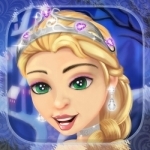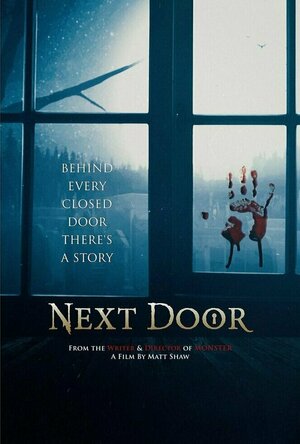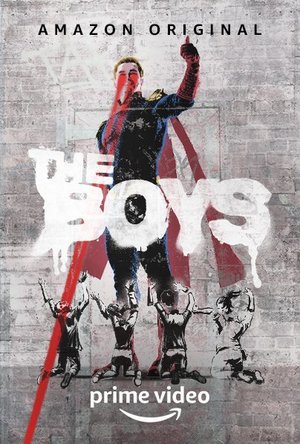
The Get-Outside Guide to Winter Activities
Andrew Foran, Kevin Redmond and T.A. Loeffler
Book
A recent surge in people's reconnecting with nature has resulted in numerous reference books for...
Lyndsey Gollogly (2893 KP) rated Next Door in Books
Jun 10, 2021
Kindle
Next Door
Compiled by Matt Shaw
Once read a review will be written via Smashbomb and link posted in comments
From the mind behind "MASTERS OF HORROR" comes a new horror anthology to keep you up at night!
Whilst Matt Shaw is busy producing, writing and directing the feature film NEXT DOOR he decided to put together a horror anthology of the same name, and with the same theme as the motion picture. None of the stories in this collection feature in the film; the two products are completely separate other than the central concept of exploring who does live NEXT DOOR to us?
Given the fact these are some of the biggest names in horror, you can bet that whomever is living next door probably won't be the friendliest of characters...
The year is 2019 and technology has come so far that we spend more time staring at our mobile devices, and screens in general, than getting to know our next door neighbour. Gone are the days of knowing everyone who lives on the same street, or in the same village. Instead we leave our houses, avoid eye-contact or give the bare minimum of grunts to those we see and go about our daily lives without a care for anyone else. No more street parties, no more kindly neighbours checking in on you, no more Christmas cards from the little old lady who lives across the street. There's only "us" and our technology.
This anthology takes a look at who lives NEXT DOOR and what secrets they may be keeping. And who knows, maybe it will serve as warning to you that, really, you should be paying attention to those living close-by. After all, Fred West was someone's neighbour once...
Featuring stories by:
Tim Lebbon
Shaun Hutson
Ryan C. Thomas
Jeremy Bates
David Moody
Guy N. Smith
Matthew Stokoe
Justin Woodward
Gary McMahon
Rich Hawkins
Jim Goforth
Matt Shaw
1. A Family-Friendly Neighbourhood by Ryan C Thomas
This was actually quite funny and sweet in a gruesome clever way. All the toys turning into little knife wielding creepy thing only to find out they are their kids souls! They just want to be together 😂
2. Final Feast by Guy N. Smith
Quick little story of the cannibal next door! I loved it!
3. Insurgents by Rich Hawkins
A story of a war ruined mind, a soldier dealing with his demons. Well written just not my normal read.
4. Mirror Image by David Moody
A couple move into a new house with an extra handy neighbour. I enjoyed this one funny how my husband is so crap at DIY too 😂😂
5. Neighbour Hood by Tim Lebbon
Omg this has to be the creepiest one so far and the whole reason I never use my attics’!!!
6. Dinner Date by Jeremy Bates
A bit slower than the others think I just got a little bored. Never accept dinner invitations before getting to know the guy no matter how hot he is! Silly girl!
7. Why Does Randolph Draw by Matthew Stokeoe
Got to be honest I didn’t finish it I just got so bored after page 5! Just wasn’t catching me.
8. Saturday Night Whiskey by Justin M.Woodward
This was really god and well put together a kids last cry for help from his dodgy uncle!
9. Sixteen by Jim Goforth
This felt so rushed even for a short story! Although it’s a good lesson of don’t get involved with swinging neighbours 😂
10. Pornography by Matt Saw
Haha she didn’t see that coming
11. Somewhere in Here by Gary McMahon
This was one creepy ass story and for one so short I’m throughly creeped out!!
12 By Darkness Hidden by Shaun Hutson
This was pretty good a urban legend type story. Villages can be super strange places.
I really enjoyed this compilation got some great new authors added to my list too.
Kirk Bage (1775 KP) rated The Boys - Season 2 in TV
Jan 22, 2021
In season two they have taken that key point of difference and turned the volume up to ten! All I remember from it, some three months now since I finished it, is blood, exploding and crushed heads, severed limbs, gross out deaths and lots more blood. Which, you know, turns some people on, but after the first ten times I got pretty sick of it – almost literally – and was just riding it out to the finish mostly.
Performance wise, there isn’t really a stand out, and the writing doesn’t really offer the opportunity (yet) for true emotional depth. Antony Starr, as the deplorably egotistical maniac “hero” Homelander, is the one you love to hate though! Rarely have I found myself wanting a character to get his dues so much! He is utterly loathsome and repulsive, so much credit for that creation. Depending on where they take things in season 3 and beyond, he could emerge as one of the iconic characters of this era of streaming TV.
In terms of story progression, a decent job has been made by introducing Aya Cash as Stormfront, a depraved love interest for Homelander with a big secret and a great plot device. Most of the events have revolved around her introduction, development, backstory reveal and consequences of that on the show’s main man. Meanwhile the storyline around Karl Urban as Billy Butcher becomes more and more forgettable and sometimes irrelevant.
That is the problem with this show really; it has set itself up as being Superheros that are actually assholes vs renegade anti-heros that want to stop them… but, it knows that as soon as that conflict is resolved and satisfied the show is over. So, they drag the story along with very minimal contact as yet between the two. Plenty of inner turmoil within the two groups, but no action as such against one another.
And that is why the build up to this season’s climax felt mostly anti-climactic. Although it did land a half decent cliff-hanger right at the end. I don’t know… I just feel as if it’s a show to let wash over you without that much value in analysing it. And that wash always makes me feel slightly grubbier than I was before. If redemption, conflict and resolution are on the cards they need to get a dose of it into season three, or I will probably lose interest fast.
Amazon Prime has a lot of shows a lot better than this one, but probably none that appeal as much to boys and men under 30. It has its place on the vast entertainment schedule, but personally I am craving more meaning and less of the puerile dependence on gore. However, if that is what its audience talk about, then its gonna increase not decrease. They have set their own bloody bar now and my fear is this is what the future of the show holds: more and more original ways to gross us out. I’d like to be proved wrong, but I don’t feel in a huge rush about it either way.

Fashion Princess Dress Up Game for Girls: Makeover
Lifestyle and Games
App
*** Become a true fashion icon with this amazing dress up game! *** ** Welcome to the fashionable...

3D Makeover and Dress Up Games for Girls
Lifestyle and Games
App
*** Write your own fabulous fashion story! *** ** Get ready for the most spectacular 3D fashion...

The Photographer's Ephemeris
Photo & Video and Navigation
App
"Head and shoulders above the crowd is The Photographer’s Ephemeris. Odd name, great app." -...

Topo Maps+
Navigation and Travel
App
Go Deeper into the Backcountry. ** ZDNet's 24 Best iPhone or iPad apps for 2017 ** Featured in Apps...

Polnav mobile Navigation
Navigation and Travel
App
The New GPS Navigation App Download for FREE! Offline Map Supported. No More Boundary of the...



